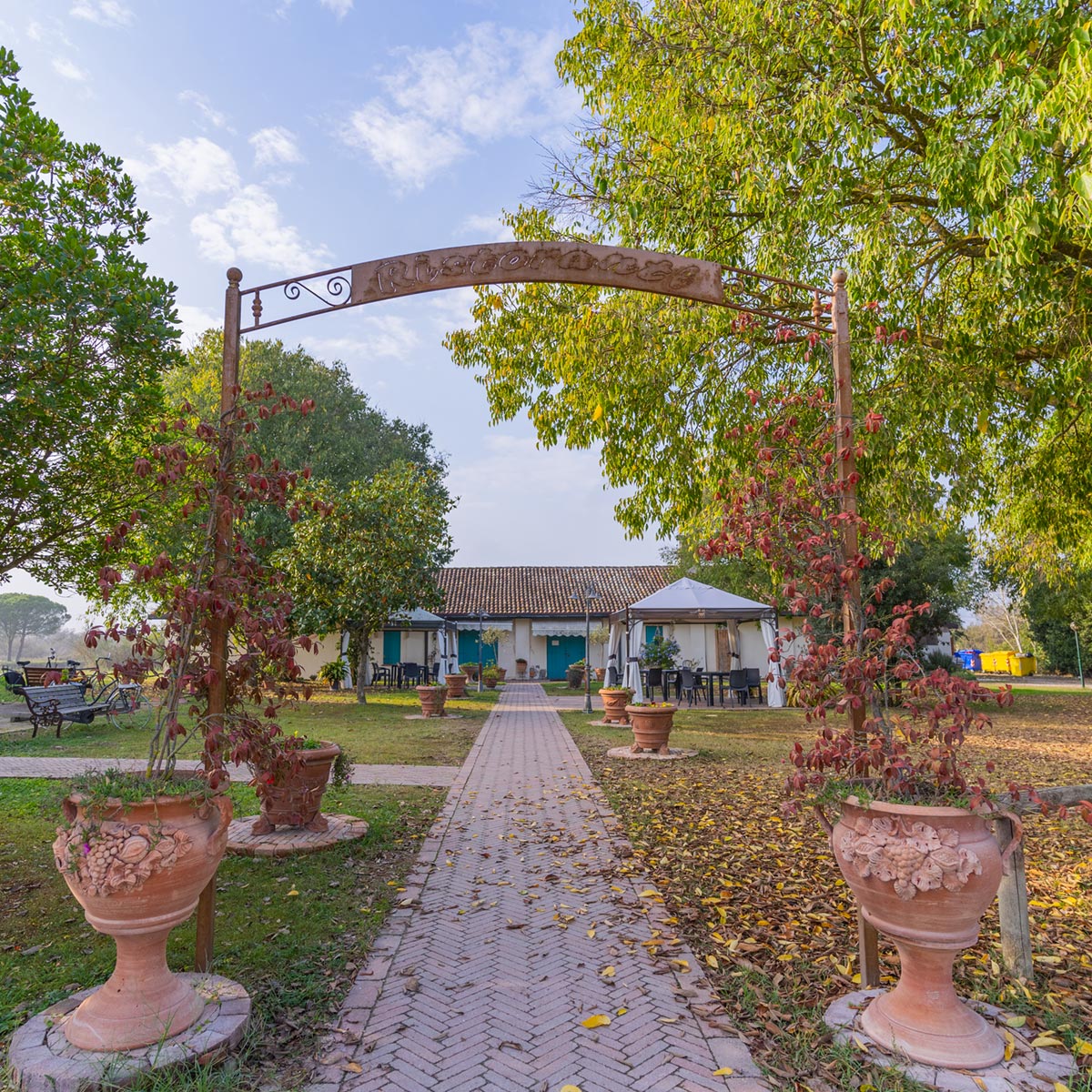In the pulsating heart of the Po Delta, surrounded by a breathtaking landscape where nature reigns supreme, stands the Hotel Rurale Cannevie'. A place where time seems to slow down, allowing you to rediscover the pleasure of silence, peace and authentic contact with the natural environment.
A holiday dedicated to relaxation and nature.
The Cannevie Oasis offers the unique experience of a stay immersed in an oasis of tranquility, far from the stress and frenzy of everyday life. With its privileged position within the Natural Oasis of the Po Delta, the Hotel becomes the ideal base for exploring the natural wonders of the area, including walks among the reeds, observation of the uniquely fascinating birdlife and boat trips on the calm waters of the Po.
In the pulsating heart of the Po Delta, surrounded by a breathtaking landscape where nature reigns supreme, stands the Hotel Rurale Cannevie'. A place where time seems to slow down, allowing you to rediscover the pleasure of silence, peace and authentic contact with the natural environment.
A holiday dedicated to relaxation and nature.
The Cannevie Oasis offers the unique experience of a stay immersed in an oasis of tranquility, far from the stress and frenzy of everyday life. With its privileged position within the Natural Oasis of the Po Delta, the Hotel becomes the ideal base for exploring the natural wonders of the area, including walks among the reeds, observation of the uniquely fascinating birdlife and boat trips on the calm waters of the Po.

Start each day in the best way possible with our delicious and hearty breakfasts, praised by all our guests. From homemade cakes to savory delights, every bite is a journey into local flavor and tradition. Then, at Canneviè Restaurant, let us pamper you with an unforgettable dinner, where every dish is meticulously prepared and served with the utmost kindness.
Let yourself be guided by the valuable advice of our managers to discover the most picturesque corners of the Po Delta. Whether biking along nature trails, boating among the branches of the river, or walking the hidden paths, each experience will become a precious memory to take with you.
Rest in our rooms that are clean, tidy and equipped with every comfort. Every space is designed to provide you with a deep and rejuvenating rest, with the silence of nature as the backdrop to your nights.
The Cannaviè Oasis is not just a hotel, but a true refuge where you can find yourself, immersing yourself in an environment where peace, serenity and the beauty of nature always come first. Whether you are a birdwatcher, a lover of long walks or simply looking for a place to regenerate body and spirit, you will find your corner of paradise here.
Don't miss the opportunity to experience an unforgettable vacation where wellness, relaxation and adventure come together in a unique experience. Book now your stay at Hotel L'Oasi Cannaviè: the oasis of peace you have always dreamed of is waiting for you.

We and selected third parties use cookies or similar technologies for technical purposes and, with your consent,
also for other purposes as specified in the .
If you close this banner with a tick or click on "Decline", only technical cookies will be used. If you want to select the
cookies to be installed, click on 'Customise'. If you prefer, you can consent to the use of all cookies, including
cookies other than technical cookies, by clicking on "Accept all". You can change your choice at any time.